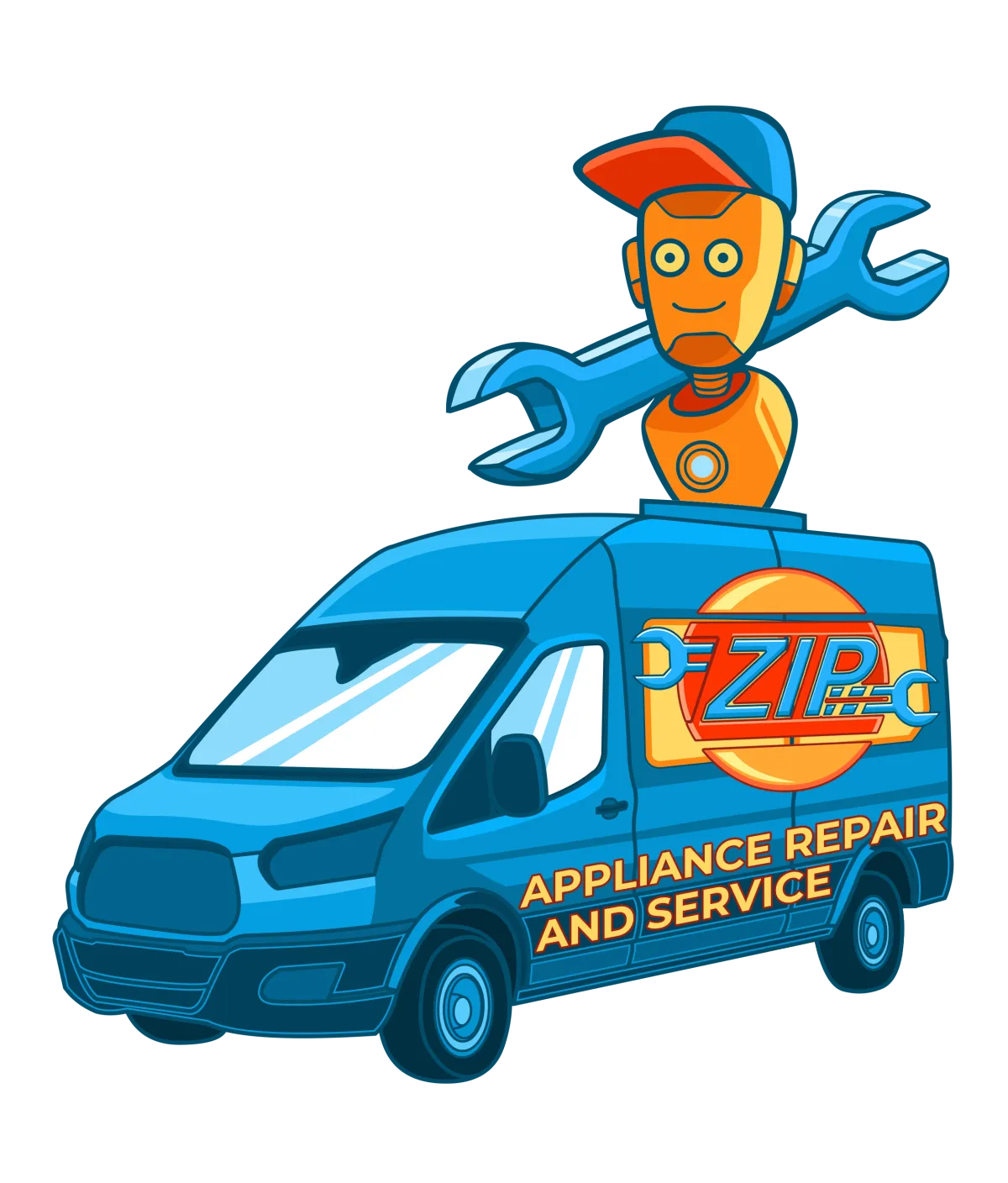Phone: (559) 272-4265
Appliance Repair Tips For Bakersfield, CA Residents

Washer Not Starting? Tips to Get Your GE Machine Running
When your GE washer won't start, it can throw your whole day off balance. But with the right troubleshooting steps, you can get it back up and running in no time. - Appliance Boss
Introduction
The frustration of a washer that won’t start is something most of us have faced at one point or another. Picture this: you’ve just loaded your GE washer with a week’s worth of laundry, only to press the start button and be met with silence. No hum of the motor, no rush of water—nothing. This situation is not just an inconvenience; it can completely derail your day, especially when clean clothes are a necessity. Understanding the underlying issues that could cause your GE washer to refuse to start is crucial for getting back on track quickly.
Why It's Important to Address the Issue Quickly
When your GE washer won’t start, it’s tempting to put off troubleshooting in hopes that the problem will somehow resolve itself. However, delaying action can lead to more significant issues down the line. A washer that doesn’t start might signal a minor glitch, but it could also be an early warning sign of a more severe problem. Addressing the issue promptly can prevent further damage, reduce repair costs, and ensure that your laundry routine returns to normal without unnecessary delays.

Overview of Common Causes and Solutions
Before diving into detailed troubleshooting steps, it’s helpful to understand the most common reasons why your GE washer might not start. Issues can range from simple power supply problems to more complex mechanical failures. By familiarizing yourself with these common culprits, you’ll be better equipped to diagnose and fix the issue efficiently.
Initial Troubleshooting Steps
Check the Power Source: Ensuring Your Washer Is Plugged In
It might sound obvious, but the first step in troubleshooting a non-starting washer is to ensure that it’s properly plugged into a working electrical outlet. Sometimes, the simplest solution is the correct one. If the washer isn’t receiving power, it won’t start, no matter how many times you press the button.
Inspect the Circuit Breaker: Could It Be Tripped?
If your washer is plugged in but still won’t start, the next step is to check your home’s circuit breaker. Washers require a substantial amount of power, and it’s not uncommon for the circuit breaker to trip, cutting off electricity to the machine. Resetting the breaker might be all it takes to get your washer running again.
Testing the Outlet: Is It Delivering Power?
To rule out the possibility of a faulty outlet, plug another device into the same outlet to see if it works. If the outlet isn’t delivering power, you may need to call an electrician to address the issue. Ensuring the outlet is functional is a crucial step in diagnosing the problem with your washer.
Door and Latch Issues
Is the Door Properly Closed? How This Affects Starting
Your GE washer is equipped with a safety feature that prevents it from starting if the door isn’t securely closed. This is to ensure that water doesn’t spill out during the cycle. Double-check that the door is fully shut and latched before attempting to start the machine again.
Inspecting the Door Latch: Common Malfunctions
The door latch itself can sometimes malfunction, preventing the washer from recognizing that the door is closed. Over time, latches can wear out or become misaligned. If the latch isn’t working correctly, the washer won’t start as a safety precaution.
How the Door Lock Mechanism Impacts Operation
In addition to the latch, many washers have an electronic door lock mechanism that engages once the cycle begins. If this mechanism is faulty, it can prevent the washer from starting. Inspecting and possibly replacing the door lock can resolve this issue.
Control Panel and Settings
Reviewing Control Settings: Is the Washer Set Correctly?
Sometimes, the issue lies in the settings rather than the washer itself. Make sure that the control settings are correct and that the cycle you’ve selected is appropriate for the load. An incorrect setting could be the reason your washer isn’t starting.
Resetting the Control Panel: A Simple Fix for Minor Glitches
Like all electronics, the control panel of your washer can experience minor glitches that prevent it from functioning correctly. Performing a simple reset by unplugging the washer for a few minutes and then plugging it back in can often clear these issues.
Understanding Error Codes: What Are They Telling You?
Many modern GE washers display error codes on the control panel when something goes wrong. These codes are your washer’s way of telling you what the problem is. Refer to your washer’s manual to decipher these codes and take appropriate action.
Electrical Components
Checking the Power Cord: Is It Damaged or Loose?
The power cord is the lifeline of your washer. If it’s damaged, frayed, or loosely connected, your washer won’t receive the power it needs to start. Inspect the cord for any visible signs of wear and ensure it’s securely connected to both the washer and the outlet.
Testing the Thermal Fuse: A Key Safety Component
The thermal fuse is a safety device that prevents your washer from overheating. If this fuse blows, it will cut power to the washer, preventing it from starting. Testing and replacing a faulty thermal fuse is an essential step in the troubleshooting process.
Inspecting the Timer: Is It Advancing Properly?
The timer controls the various stages of the washing cycle. If the timer isn’t advancing properly, your washer might not start. Testing the timer requires a bit of technical knowledge, but it’s an important component to check when diagnosing startup issues.
Water Supply Issues
Ensuring the Water Supply Is On: A Basic but Crucial Check
A washer won’t start if it’s not receiving water. Make sure that the water supply valves are fully open and that water is flowing to the machine. This is a simple but often overlooked step in troubleshooting a non-starting washer.
Inspecting the Water Inlet Valve: Could It Be Clogged?
The water inlet valve controls the flow of water into the washer. If this valve is clogged with debris or has failed, your washer won’t start. Cleaning or replacing the valve can resolve this issue.
Checking Water Pressure: Is It Adequate for Operation?
Low water pressure can prevent your washer from filling properly, which in turn can stop it from starting. Ensuring that your home’s water pressure is within the acceptable range is an important part of the troubleshooting process.
Motor and Pump Concerns
Understanding the Role of the Motor: What If It Fails?
The motor is the heart of your washer, driving the drum and circulating water. If the motor fails, your washer won’t start. Understanding the symptoms of a failing motor can help you identify this issue early on.
How to Test the Motor: Identifying Common Issues
Testing the motor involves checking for continuity using a multimeter. If the motor isn’t functioning correctly, it may need to be repaired or replaced. This is a more advanced troubleshooting step, but it’s crucial for diagnosing startup problems.
Inspecting the Pump: Is It Functioning Properly?
The pump is responsible for draining water from the washer. If the pump is clogged or has failed, it can prevent the washer from starting. Inspecting and cleaning the pump can often resolve this issue.
Drive Belt and Agitator Problems
Checking the Drive Belt: Is It Worn or Broken?
The drive belt connects the motor to the drum, allowing it to spin during the wash cycle. If the belt is worn, frayed, or broken, the drum won’t turn, and the washer won’t start. Replacing a damaged belt is a straightforward fix.
Inspecting the Agitator: Ensuring It’s Not Jammed
The agitator is the central post in the washer drum that helps to move clothes during the wash cycle. If it’s jammed or broken, it can prevent the washer from starting. Inspecting the agitator for any obstructions is a key troubleshooting step.
How Drive Belt Issues Can Prevent Starting
A worn or broken drive belt can cause more than just spinning issues; it can prevent the washer from starting altogether. Ensuring the belt is in good condition is vital for smooth operation.
Common User Errors
Avoiding Overloading: How Too Many Clothes Can Cause Problems
Overloading the washer can strain its components, leading to startup issues. Ensuring that you’re not overloading your washer is an easy way to prevent problems.
Ensuring Proper Detergent Use: How It Affects Washer Function
Using too much or the wrong type of detergent can lead to residue buildup, which can affect the washer’s operation. Ensuring you’re using the correct detergent in the right amount is important for maintaining your washer’s performance.
Reviewing the Washer Manual: Are You Missing Key Details?
Sometimes, the solution to your problem is right in the manual. Reviewing the manufacturer’s instructions can provide insights into proper use and maintenance that could resolve your startup issues.
Advanced Troubleshooting
Using a Multimeter: Testing Electrical Components Safely
A multimeter is a handy tool for testing various electrical components within your washer. From the motor to the thermal fuse, using a multimeter can help you pinpoint the source of your startup problems.
Inspecting Internal Wiring: Could There Be a Short?
Wiring issues within the washer can prevent it from starting. Inspecting the internal wiring for shorts, breaks, or loose connections is a critical step in advanced troubleshooting.
Replacing Faulty Components: When DIY Repairs Are an Option
If you’re comfortable with DIY repairs, replacing faulty components like the motor, pump, or timer can save you time and money. However, it’s essential to ensure that you’re confident in your abilities before attempting these repairs.
When to Seek Professional Help
Identifying Signs That Require Expert Attention
Not all washer issues can be resolved with DIY troubleshooting. Recognizing when a problem is beyond your skill level and requires professional help is important to avoid further damage.
Finding a Reliable GE Washer Repair Service
Choosing the right repair service is crucial for ensuring your washer is fixed correctly. Look for a service that specializes in GE washers and has a good reputation for quality work.
Cost Considerations: Repair vs. Replacement
Sometimes, repairing an old washer may not be the most cost-effective option. Understanding when it’s time to replace your washer instead of repairing it can save you money in the long run.
Preventative Maintenance Tips
Regular Cleaning of the Washer: Keeping It in Top Condition
Routine cleaning of your washer can prevent many common issues. Regularly cleaning the drum, detergent dispenser, and filters can keep your washer running smoothly.
Inspecting Hoses and Seals: Preventing Future Issues
Hoses and seals can wear out over time, leading to leaks and other problems. Regularly inspecting these components and replacing them as needed can prevent startup issues.
Creating a Maintenance Schedule: How to Extend Washer Lifespan
A maintenance schedule can help you stay on top of necessary upkeep for your washer. Regularly scheduled maintenance can extend the lifespan of your washer and prevent many common problems.
Conclusion:
If your GE washer still won’t start after following these troubleshooting steps, it might be time to seek professional help. At Zip Appliance Repair and Service, we specialize in diagnosing and fixing GE washers quickly and efficiently. Visit our website at www.ziprepairservice.com or call us at (661) 387-2282 to schedule a service appointment today.

Washer Not Starting? Tips to Get Your GE Machine Running
When your GE washer won't start, it can throw your whole day off balance. But with the right troubleshooting steps, you can get it back up and running in no time. - Appliance Boss
Introduction
The frustration of a washer that won’t start is something most of us have faced at one point or another. Picture this: you’ve just loaded your GE washer with a week’s worth of laundry, only to press the start button and be met with silence. No hum of the motor, no rush of water—nothing. This situation is not just an inconvenience; it can completely derail your day, especially when clean clothes are a necessity. Understanding the underlying issues that could cause your GE washer to refuse to start is crucial for getting back on track quickly.
Why It's Important to Address the Issue Quickly
When your GE washer won’t start, it’s tempting to put off troubleshooting in hopes that the problem will somehow resolve itself. However, delaying action can lead to more significant issues down the line. A washer that doesn’t start might signal a minor glitch, but it could also be an early warning sign of a more severe problem. Addressing the issue promptly can prevent further damage, reduce repair costs, and ensure that your laundry routine returns to normal without unnecessary delays.

Overview of Common Causes and Solutions
Before diving into detailed troubleshooting steps, it’s helpful to understand the most common reasons why your GE washer might not start. Issues can range from simple power supply problems to more complex mechanical failures. By familiarizing yourself with these common culprits, you’ll be better equipped to diagnose and fix the issue efficiently.
Initial Troubleshooting Steps
Check the Power Source: Ensuring Your Washer Is Plugged In
It might sound obvious, but the first step in troubleshooting a non-starting washer is to ensure that it’s properly plugged into a working electrical outlet. Sometimes, the simplest solution is the correct one. If the washer isn’t receiving power, it won’t start, no matter how many times you press the button.
Inspect the Circuit Breaker: Could It Be Tripped?
If your washer is plugged in but still won’t start, the next step is to check your home’s circuit breaker. Washers require a substantial amount of power, and it’s not uncommon for the circuit breaker to trip, cutting off electricity to the machine. Resetting the breaker might be all it takes to get your washer running again.
Testing the Outlet: Is It Delivering Power?
To rule out the possibility of a faulty outlet, plug another device into the same outlet to see if it works. If the outlet isn’t delivering power, you may need to call an electrician to address the issue. Ensuring the outlet is functional is a crucial step in diagnosing the problem with your washer.
Door and Latch Issues
Is the Door Properly Closed? How This Affects Starting
Your GE washer is equipped with a safety feature that prevents it from starting if the door isn’t securely closed. This is to ensure that water doesn’t spill out during the cycle. Double-check that the door is fully shut and latched before attempting to start the machine again.
Inspecting the Door Latch: Common Malfunctions
The door latch itself can sometimes malfunction, preventing the washer from recognizing that the door is closed. Over time, latches can wear out or become misaligned. If the latch isn’t working correctly, the washer won’t start as a safety precaution.
How the Door Lock Mechanism Impacts Operation
In addition to the latch, many washers have an electronic door lock mechanism that engages once the cycle begins. If this mechanism is faulty, it can prevent the washer from starting. Inspecting and possibly replacing the door lock can resolve this issue.
Control Panel and Settings
Reviewing Control Settings: Is the Washer Set Correctly?
Sometimes, the issue lies in the settings rather than the washer itself. Make sure that the control settings are correct and that the cycle you’ve selected is appropriate for the load. An incorrect setting could be the reason your washer isn’t starting.
Resetting the Control Panel: A Simple Fix for Minor Glitches
Like all electronics, the control panel of your washer can experience minor glitches that prevent it from functioning correctly. Performing a simple reset by unplugging the washer for a few minutes and then plugging it back in can often clear these issues.
Understanding Error Codes: What Are They Telling You?
Many modern GE washers display error codes on the control panel when something goes wrong. These codes are your washer’s way of telling you what the problem is. Refer to your washer’s manual to decipher these codes and take appropriate action.
Electrical Components
Checking the Power Cord: Is It Damaged or Loose?
The power cord is the lifeline of your washer. If it’s damaged, frayed, or loosely connected, your washer won’t receive the power it needs to start. Inspect the cord for any visible signs of wear and ensure it’s securely connected to both the washer and the outlet.
Testing the Thermal Fuse: A Key Safety Component
The thermal fuse is a safety device that prevents your washer from overheating. If this fuse blows, it will cut power to the washer, preventing it from starting. Testing and replacing a faulty thermal fuse is an essential step in the troubleshooting process.
Inspecting the Timer: Is It Advancing Properly?
The timer controls the various stages of the washing cycle. If the timer isn’t advancing properly, your washer might not start. Testing the timer requires a bit of technical knowledge, but it’s an important component to check when diagnosing startup issues.
Water Supply Issues
Ensuring the Water Supply Is On: A Basic but Crucial Check
A washer won’t start if it’s not receiving water. Make sure that the water supply valves are fully open and that water is flowing to the machine. This is a simple but often overlooked step in troubleshooting a non-starting washer.
Inspecting the Water Inlet Valve: Could It Be Clogged?
The water inlet valve controls the flow of water into the washer. If this valve is clogged with debris or has failed, your washer won’t start. Cleaning or replacing the valve can resolve this issue.
Checking Water Pressure: Is It Adequate for Operation?
Low water pressure can prevent your washer from filling properly, which in turn can stop it from starting. Ensuring that your home’s water pressure is within the acceptable range is an important part of the troubleshooting process.
Motor and Pump Concerns
Understanding the Role of the Motor: What If It Fails?
The motor is the heart of your washer, driving the drum and circulating water. If the motor fails, your washer won’t start. Understanding the symptoms of a failing motor can help you identify this issue early on.
How to Test the Motor: Identifying Common Issues
Testing the motor involves checking for continuity using a multimeter. If the motor isn’t functioning correctly, it may need to be repaired or replaced. This is a more advanced troubleshooting step, but it’s crucial for diagnosing startup problems.
Inspecting the Pump: Is It Functioning Properly?
The pump is responsible for draining water from the washer. If the pump is clogged or has failed, it can prevent the washer from starting. Inspecting and cleaning the pump can often resolve this issue.
Drive Belt and Agitator Problems
Checking the Drive Belt: Is It Worn or Broken?
The drive belt connects the motor to the drum, allowing it to spin during the wash cycle. If the belt is worn, frayed, or broken, the drum won’t turn, and the washer won’t start. Replacing a damaged belt is a straightforward fix.
Inspecting the Agitator: Ensuring It’s Not Jammed
The agitator is the central post in the washer drum that helps to move clothes during the wash cycle. If it’s jammed or broken, it can prevent the washer from starting. Inspecting the agitator for any obstructions is a key troubleshooting step.
How Drive Belt Issues Can Prevent Starting
A worn or broken drive belt can cause more than just spinning issues; it can prevent the washer from starting altogether. Ensuring the belt is in good condition is vital for smooth operation.
Common User Errors
Avoiding Overloading: How Too Many Clothes Can Cause Problems
Overloading the washer can strain its components, leading to startup issues. Ensuring that you’re not overloading your washer is an easy way to prevent problems.
Ensuring Proper Detergent Use: How It Affects Washer Function
Using too much or the wrong type of detergent can lead to residue buildup, which can affect the washer’s operation. Ensuring you’re using the correct detergent in the right amount is important for maintaining your washer’s performance.
Reviewing the Washer Manual: Are You Missing Key Details?
Sometimes, the solution to your problem is right in the manual. Reviewing the manufacturer’s instructions can provide insights into proper use and maintenance that could resolve your startup issues.
Advanced Troubleshooting
Using a Multimeter: Testing Electrical Components Safely
A multimeter is a handy tool for testing various electrical components within your washer. From the motor to the thermal fuse, using a multimeter can help you pinpoint the source of your startup problems.
Inspecting Internal Wiring: Could There Be a Short?
Wiring issues within the washer can prevent it from starting. Inspecting the internal wiring for shorts, breaks, or loose connections is a critical step in advanced troubleshooting.
Replacing Faulty Components: When DIY Repairs Are an Option
If you’re comfortable with DIY repairs, replacing faulty components like the motor, pump, or timer can save you time and money. However, it’s essential to ensure that you’re confident in your abilities before attempting these repairs.
When to Seek Professional Help
Identifying Signs That Require Expert Attention
Not all washer issues can be resolved with DIY troubleshooting. Recognizing when a problem is beyond your skill level and requires professional help is important to avoid further damage.
Finding a Reliable GE Washer Repair Service
Choosing the right repair service is crucial for ensuring your washer is fixed correctly. Look for a service that specializes in GE washers and has a good reputation for quality work.
Cost Considerations: Repair vs. Replacement
Sometimes, repairing an old washer may not be the most cost-effective option. Understanding when it’s time to replace your washer instead of repairing it can save you money in the long run.
Preventative Maintenance Tips
Regular Cleaning of the Washer: Keeping It in Top Condition
Routine cleaning of your washer can prevent many common issues. Regularly cleaning the drum, detergent dispenser, and filters can keep your washer running smoothly.
Inspecting Hoses and Seals: Preventing Future Issues
Hoses and seals can wear out over time, leading to leaks and other problems. Regularly inspecting these components and replacing them as needed can prevent startup issues.
Creating a Maintenance Schedule: How to Extend Washer Lifespan
A maintenance schedule can help you stay on top of necessary upkeep for your washer. Regularly scheduled maintenance can extend the lifespan of your washer and prevent many common problems.
Conclusion:
If your GE washer still won’t start after following these troubleshooting steps, it might be time to seek professional help. At Zip Appliance Repair and Service, we specialize in diagnosing and fixing GE washers quickly and efficiently. Visit our website at www.ziprepairservice.com or call us at (661) 387-2282 to schedule a service appointment today.
If your dryer has been giving you problems, contact Zip Appliance Repair & Service at (661) 387-2282

Appliance Repair In A Zip
If you need a dryer repair call our Team at (661) 387-2282, or visit our online scheduling page to request service.
Appliance Repair
Plumbing Repair Services
HAVE A QUESTION, CALL (661) 387-2282

Online Offers
Take advantage of our online discount offers - save time and money...

Residential & Commercial appliances
See what our company can do for you

Appliance Repair Tips
If your appliance is not working properly...

1405 Commercial Way ste 100
Bakersfield, CA 93309
Lic # 1116346
Equipment We Sevice
- A Call To Confirm Your Appointment Time
- A Email Detailing Your Assigned Technician
- Information Needed Before The Repair Can Be Started
- An Estimate Of Work To Be Done
© 2025 ZIP APPLIANCE REPAIR & SERVICE LLC








